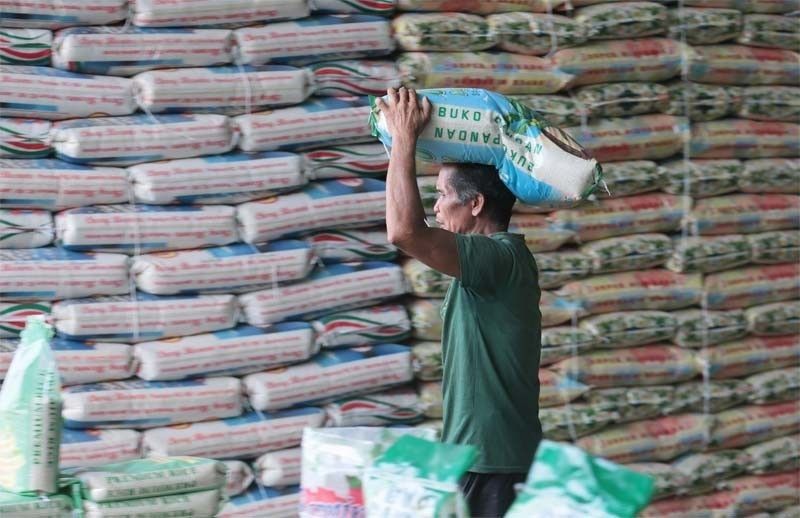500,000 MT rice arriving from India, Taiwan

MANILA, Philippines — Nearly 500,000 metric tons of rice from Taiwan and India will arrive beginning this month until February 2024, the Department of Agriculture (DA) said yesterday.
This is in preparation for the possible impact of the El Niño phenomenon on palay production.
“We received reports that around 100,000 tons of imported rice have already arrived in the country. This is part of the 495,000 MT committed by import permit holders to (Agriculture) Secretary (Francisco) Tiu Laurel,” DA Undersecretary Roger Navarro said in a statement yesterday.
Meanwhile, a total of 20,000 bags – equivalent to 1,000 MT – delivered before Christmas Day constituted the first batch of the 40,000 bags of rice donated by Taiwan, Navarro said.
Another 75,000 MT will arrive from India starting this week until early January, the DA official said.
“The 75,000 MT due in the coming weeks is part of the 295,000 MT of rice India has allocated to the Philippines,” Navarro said.
In October, India approved the export of over one million MT to seven countries, with the Philippines getting over 28 percent of the export allocation.
“With the arrival of imported rice and the volume harvested by farmers in recent months, the country will have sufficient supply of the national food staple until the next harvest which starts in March,” Navarro noted.
These imported rice will be slapped with an import duty of 35 percent, he said.
He noted that the country’s daily rice consumption is 36,000 MT per day, or 1.08 million tons monthly.
Economic managers, especially the Bangko Sentral ng Pilipinas (BSP), are closely watching the rice supply situation due to its impact on inflation.
The BSP has aggressively raised interest rates since last year to tame inflation, which affects the purchasing power of consumers and undermines economic growth.
Based on monitoring of the DA, the retail price of local regular milled rice was pegged at P52 per kilo; local well-milled rice, P56 per kilo; local premium rice, P62 per kilo and local special rice, P68 per kilo.
Imported well-milled rice was sold at P58 per kilo; imported premium rice, P61 per kilo and imported special rice, P65 per kilo.
‘Prices still high’
Rice watch group Bantay Bigas said the extension of low tariffs on commodities, particularly on rice, under Executive Order 50 only shows that these measures did not deliver the goal of lowering prices.
“The consumers did not feel the effect of the low tariff but the price of food products continues to rise, especially rice,” Bantay Bigas spokesperson Cathy Estavillo said in Filipino.
She said this extension will only serve the interests of importers and traders and will result in billions of forgone government revenues.
“Our call remains to strengthen local production through support services and subsidies to farmers, post-harvest facilities and issue an EO to stop the implementation of Republic Act 11203 (Rice Tariffication Law) so that the trading function of the National Food Authority can be immediately restored. The NFA can buy a significant volume of farmers’ produce,” Estavillo said.
“[We will also call for the] immediate release of the P12-billion fund from the Rice Competitiveness Enhancement Fund and distribute it to farmers. We call on different sectors and agricultural stakeholders to unite against the re-extension of low tariffs,” she said.
Meanwhile, former agriculture secretary Leonardo Montemayor criticized the decision to extend the lower tariffs on rice, corn and pork until the end of 2024, saying that for the last three years of its implementation, hog raisers and farmers suffered from the yearly leeway given to imported agricultural commodities but which did not benefit the consumers and the government.
“It has also caused the Bureau of Customs, the government billions of revenue losses,” Montemayor said in a radio interview.
He said that if economic managers will solely depend on lower tariffs, the target of affordable food will not happen and that what should be done is strengthen local production if the government wants cheaper agricultural commodities for Filipinos.
“Based on our experience in the last three years as the lower tariffs started in the middle of 2021, during the time of (former) president (Rodrigo) Duterte, it failed to bring down the retail prices of rice, corn and pork,” Montemayor said.
“Even with tariff of 35 percent or 40 percent for in quota or out quota, it (retail prices of pork) should not exceed P300 but the cheapest imported pork was pegged at P400 and above,” Montemayor noted.
“What is the guarantee that the extension of the lower tariffs will benefit the consumers? On the part of the farmers, it affects their production,” he said.
Montemayor also backed the imposition of suggested retail price on pork to prevent overpricing in the market.
He added that the promise of affordable prices for consumers does not happen, same with rice, based on monitoring of the DA in Metro Manila markets, imported well-milled and regular milled rice were not available as imported premium rice was sold for as high as P60 per kilo and imported special rice, P66 per kilo.
At the same time, Montemayor said farmers will be further affected by the lower tariff on imported corn as the prevailing price in the world market was only P14 to P15 per kilo compared to P19 per kilo for locally produced corn.
“Even if you impose tariffs, the retail price of imported corn will be P16, P17 (per kilo). It will affect the retail price of corn, especially with lower tariffs,” he noted.
For his part, Philippine Pork Producers Federation president Nonon Tambago said the move to extend the lowering of tariff has further affected the confidence of local swine farmers amid the slump in farmgate price as it reached P175 per kilo.
“We are deeply disappointed with the decision to extend the lower tariff on pork until Dec. 31, 2024. Over the past three years, multiple executive orders have been issued to lower tariffs, but they have not achieved the goal of making pork more affordable for consumers,” Tambago told The STAR.
He noted that despite the decrease in farmgate price, the retail price remains high at P350 per kilo.
“Instead of focusing solely on lowering tariffs, it is crucial to address the gap between farmgate and retail prices as part of a long-term solution. It is important for economic managers to consider the real situation faced by thousands of local farmers, rather than consistently favoring a few importers and traders,” Tambago added.
Samahang Industriya ng Agrikultura executive director Jayson Cainglet said it was unfortunate that the economic team succeeded in convincing President Marcos to issue EO 50.
“Here (in the Philippines), it is the reverse. Local producers are penalized and importers are rewarded and pampered with four straight years of reduced tariffs on rice, pork and corn,” Cainglet said.
- Latest
- Trending






























